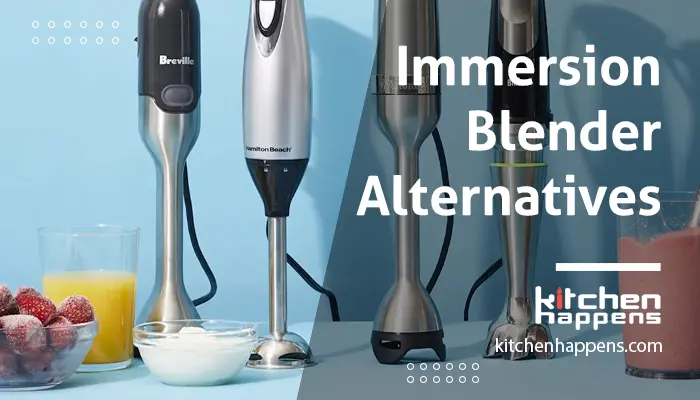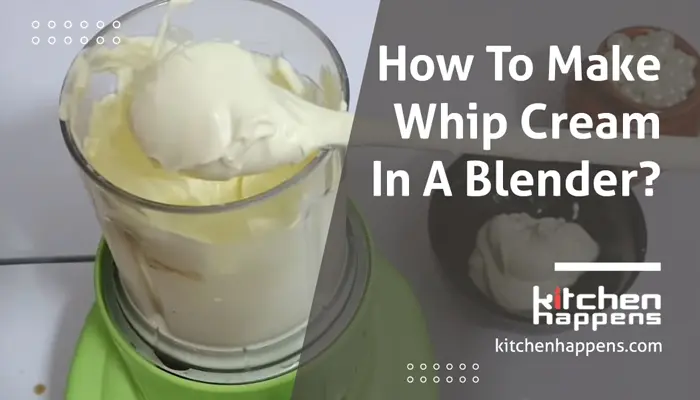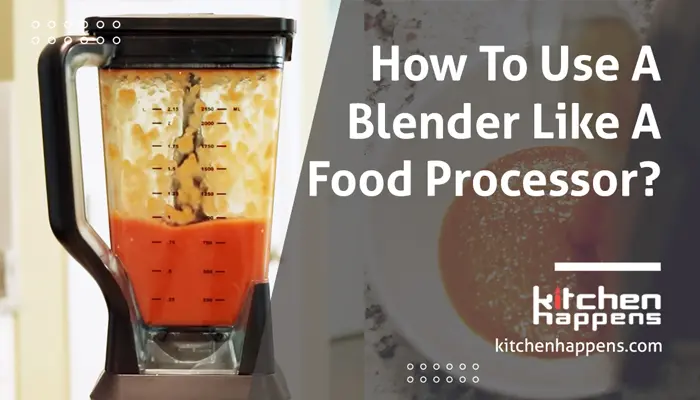An immersion blender is an excellent tool for blending dressings and sauces quickly and easily.
They are small, easy to use, and extremely popular among home cooks. Their simplicity explains their popularity. It is not surprising that many recipes call for immersion blenders today since they are so relevant.
If you’re a passionate cook, you’ve probably used an immersion blender at some point. In the event that you do not have an immersion blender or your immersion blender does not work, what should you do?
Is your heart broken? Hey, don’t worry! You have come to the right place if you are seriously looking for something that functions like an immersion blender.
Today we are going to share some immersion blender alternatives. Look at the following section and choose an alternative that you find convenient and easy.
As a starting point, let us learn a little bit about what immersion blenders are and how they work.
What Is Immersion Blender?
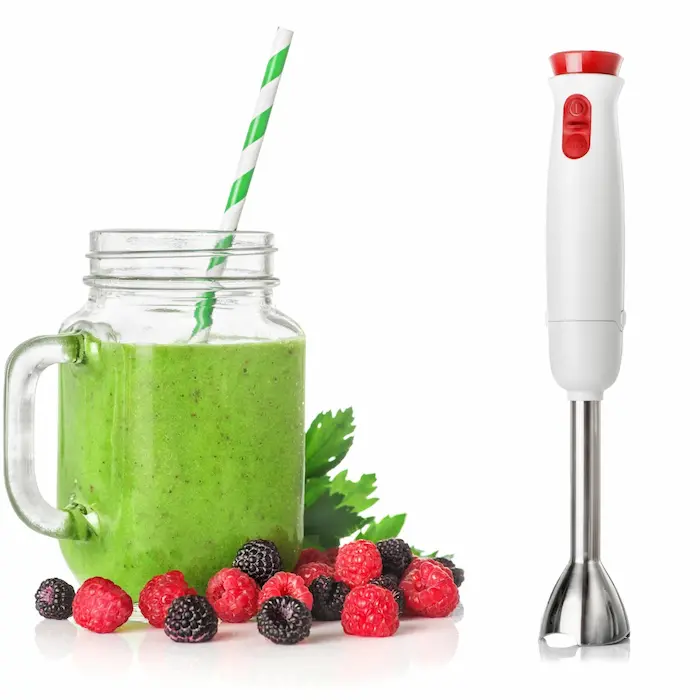
The immersion blender is a multipurpose kitchen tool that can assist in unlocking new techniques for a large number of different recipes that you may want to try.
Immersion blenders are an interesting type of blender because the blades of the blender are immersed in the ingredients, rather than pouring the ingredients into the jar of the blender like other types of blenders.
Immersion blenders, also known as hand blenders or stick blenders, are handheld appliances that have similar functions to standard blenders, such as the ability to grind dry ingredients.
Therefore, you can use an immersion blender in many recipes that call for the use of a blender for combining or processing ingredients, such as easily blended soups or lightly lemony blender cheesecake.
Why Do You Need A Immersion Blender?
Immersion blenders are hand-held blenders that resemble wands. A long drive shaft makes it submersible in liquids. While immersion blenders are best known for their ability to puree soups, they can also be used to make dressings, salsas, and whipped cream.
Using these gadgets allows you to blend things without having to transfer them to another device or container. By doing this, you save time and have fewer dishes to wash.
It is beneficial to use an immersion blender for a variety of reasons. Come on, let’s get to know them.
1. ONE DISH RECIPE
When you use a hand blender, you can blend your recipe in the same dish you’re using to prepare it. Rather than transferring hot contents to a blender jar, this makes blending hot foods like soups and chutneys on a stovetop much easier.
2. CAPACITY UNLIMITED
You can use an immersion blender in a wide variety of vessels, such as jars, mixing bowls, and pots. Commercial immersion blenders from KitchenAid are suitable for large batches and are powerful enough to blend the toughest ingredients.
3. BLEND SMALL AMOUNTS
In a regular blender, small amounts of food don’t always combine easily. Immersion blenders are useful for tasks such as emulsifying salad dressing for two, making Sriracha, or quickly chopping nuts.
4. EASY CLEANUP
You can clean an immersion blender quickly and easily by rinsing the arm and blade after use. Also, you can reduce the number of dishes you use by skipping the blender jar found on countertop models.
5. EXPONENTIAL SPEEDS
You can use lower speed settings to create smooth gravies, batters, frothed milk, and more. Whether you’re making homemade smoothies with fibrous greens, nut butter, or pureed soups with harder vegetable chunks, increase your speed.
Having learned the benefits of immersion blenders one of my friends asked me what if I don’t have an immersion blender. Afterward, I suggested an alternative to immersion blender that made him happy. Now that we know 11 hand immersion blender alternative, let’s move on.
11 Immersion Blender Alternatives
As Substitutes for Immersion Blender, you can use many other kitchen appliances. Depending on the type of food you prepare, you may already have an option. People usually use these alternatives instead of a hand blender. Depending on what you are blending, each will have a different level of effectiveness.
Blender
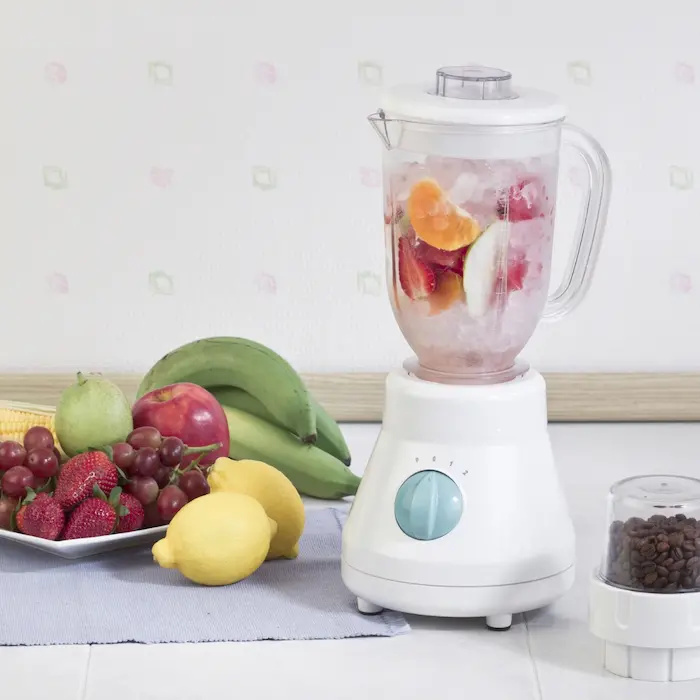
Almost everyone who does not own an immersion blender owns a standard blender, so this is an obvious alternative. Immersion blenders will be able to do the same tasks as stand blenders and even more.
A bigger motor and blade mean a bigger job. Additionally, you won’t have to worry about splatters when using a hand blender.
There is one drawback to this option: convenience is sacrificed. There are extra dishes to wash after processing all the ingredients in the blender.
Food Processor
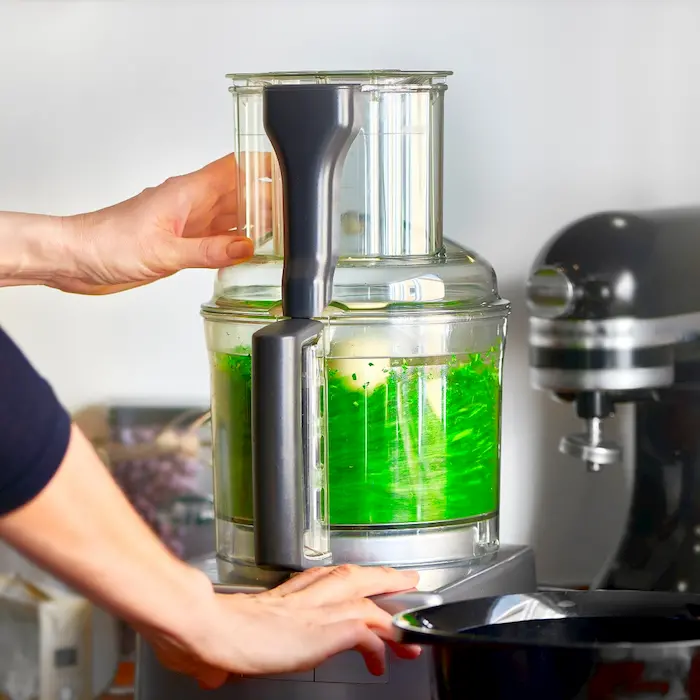
A food processor is usually used for dicing hard foods, such as nuts. In general, immersion blenders are used for soft ingredients such as soups and sauces. Despite this, they are sometimes interchangeable under certain circumstances.
You can puree vegetables for soup in a food processor. This is a great immersion blender alternative for soup.
The downside is cleaning up after you use a food processor. Unlike immersion blenders, this doesn’t have a minimalist design. If you have hard or large ingredients, a food processor will handle them quickly.
Hand Blender/ Stick Blender
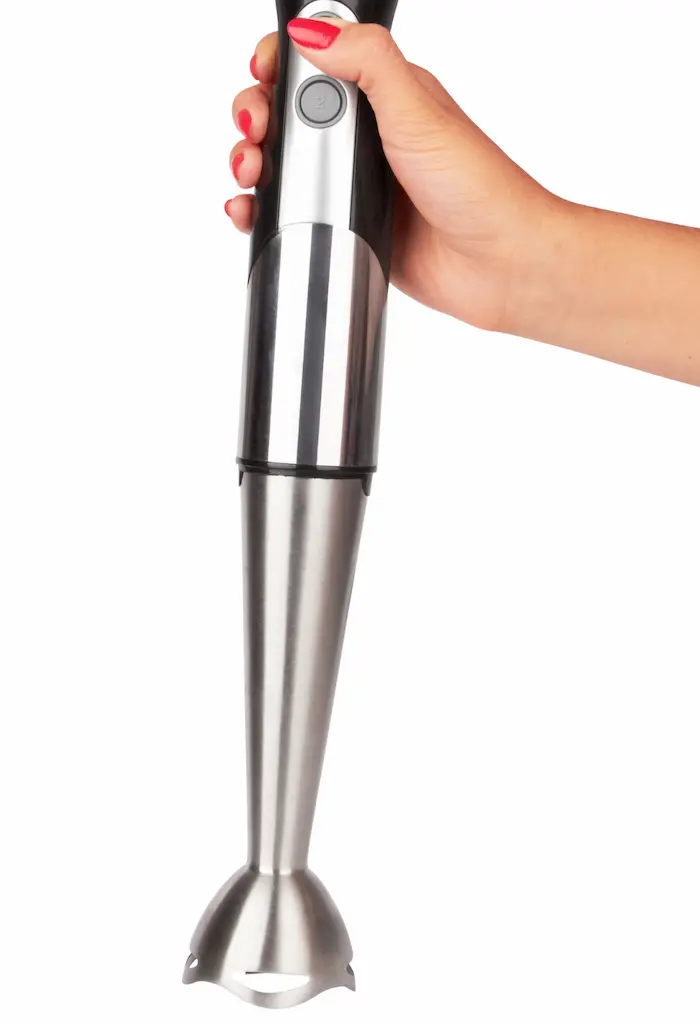
A stick blender or hand blender is one of the best kitchen tools and a great immersion blender alternative. Additionally, it may come with attachments such as whisks and hooks that can be used in the kitchen for a variety of tasks. It’s easy to whip up smoothies, soups, and dressings with this highly versatile tool.
Furthermore, it is capable of substituting for immersion blenders as well. By attaching the blending wand and pressing down on ingredients in a bowl, jar, or measuring cup, one can easily blend ingredients.
It is important to keep moisture away from any part of this kitchen item as water can loosen important components and damage the body.
Countertop Blender
A countertop blender is an incredibly useful kitchen accessory and a wonderful addition to any home chef’s arsenal. Their features make blending simpler, faster, and more convenient. Their powerful motors and strong steel blades make them able to handle a variety of ingredients, including ice cubes and cooked vegetables.
It is also much more efficient than hand-blending because of its bowl-like design, which allows multiple ingredients to be blended together. Additionally, you can sometimes use countertop blenders instead of immersion blenders though you may not think about it.
Instead of pouring the mix into the immersion blender machine’s deep pot, transfer it into a tall jug or jar before blending it in the countertop blender.
Stand Mixer

Despite it seeming overkill, you need to use what you have to accomplish your goals. If that’s all you have, you can certainly use a stand mixer. As the ingredients have to be placed in the mixer’s bowl, it’s not as convenient as handhelds.
This machine can handle large jobs at once, such as whisking large batches of soup at once. It may not be ideal to clean up with a stand mixer, but this alternative will do the job.
Hand Whisk
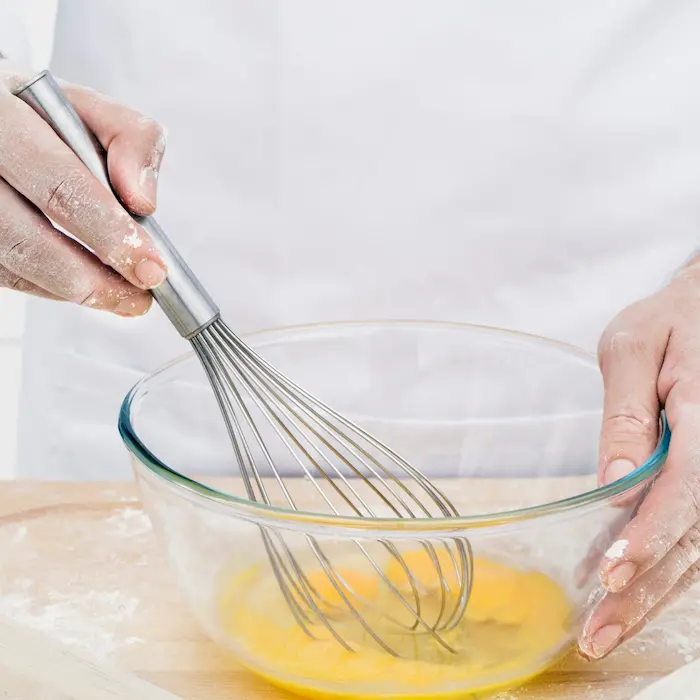
There is a lot of similarity between this substitute and a hand mixer. This tool is often identical to the one above, but it only has a different attachment. A hand mixer usually only comes with beaters, but you can find ones with whisk attachments easily.
Mixing up ingredients with a whisk is easier than mixing with beaters because you can put the whisk into the hand mixer. Cleaning up with this tool is similar to cleaning with beaters. Dishwasher safe! Just pull it out of your hand mixer and toss it in!
Chopper Bowl
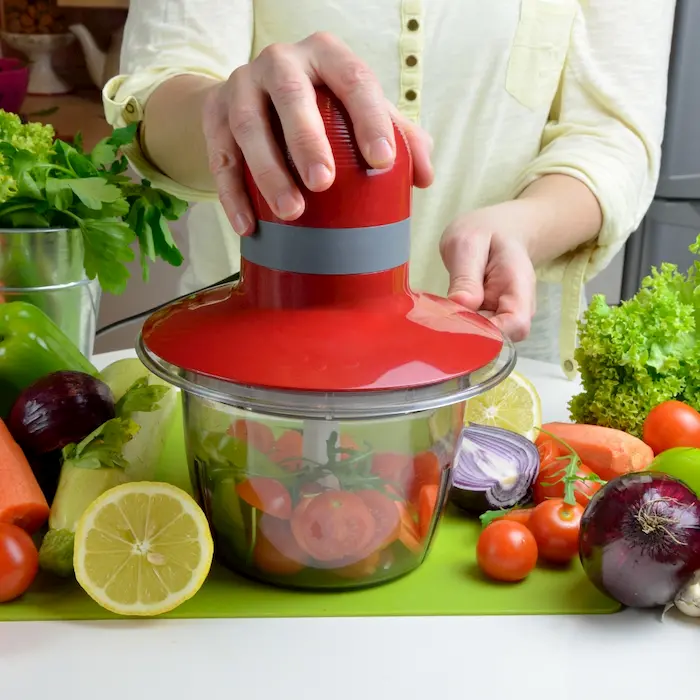
It is very similar to using a food processor and a chopper bowl. The main difference between a food processor and a chopper bowl is that food processors are powered by electricity rather than manual power.
However, you can still prepare your dishes with a chopper bowl instead of an immersion blender. With a little bit of liquid, it can finely chop vegetables and fruits, but it won’t liquefy them like an immersion blender.
This is the perfect option if you like a slightly chunky sauce or salsa without the noise of an electric tool.
Potato Masher
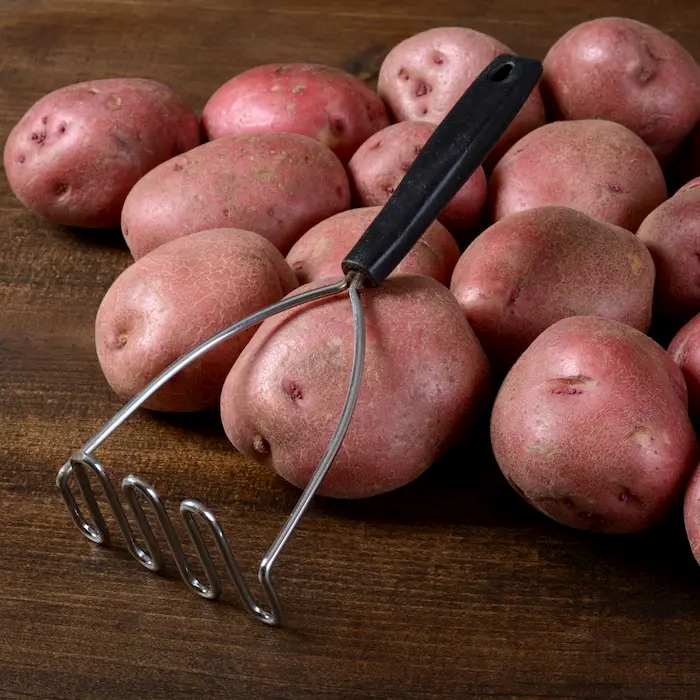
While a stand mixer is a great tool for the job, a potato masher is on the other end of the spectrum. Despite the fact that this classic tool seems low-tech in comparison to the other options, you shouldn’t disregard it.
To make sauces or soups, potato mashers are great for mashing soft vegetables. The device doesn’t even need to be plugged in! Additionally, it can be used in the cooking pot directly and is the easiest substitute on this list to clean.
Ricer

A ricer is similar to a potato masher but produces a smoother result. Additionally, they are great for squeezing out excess water from spinach and zucchini. It is convenient that many of them can be fastened to the pot. It does, however, require some strength to hold them.
Fork

Traditionally, forks were used to mash food. There are many things you can accomplish with a fork, from mashing potatoes to mushing up steamed vegetables for a baby. Forks can also be used to mix eggs before scrambling them. Unfortunately, whipping cream and pureeing soup is not as easy as they should be.
Food Mill
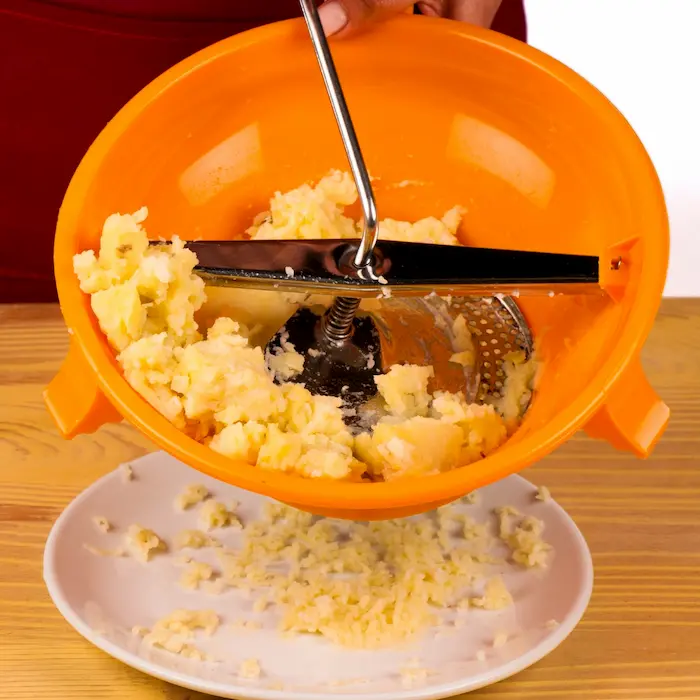
It is brilliant to have a food mill if you are going off the grid. They are durable, can handle large quantities at once, and do not require electricity. In addition, they require less strength than other hand options.
Often, kids will gladly volunteer to do this work since turning the crank and watching the purred food come out of the holes is highly enjoyable when you’re five.
These are the 11 substitutes for immersion blenders. It should now be easier for you to select one of these that suits your needs.
Final Thought
We have compiled a list of immersion blender alternatives in this article. After reading this article, you now know what you can use in the absence of an immersion blender to accomplish the same tasks.
For specific tasks in the kitchen, each item offers advantages and features unique to it. Each of these options can provide you with an effective and efficient solution, whether you’re looking to knead dough or blend large batches of soup.
It is always my pleasure to make your cooking experience effortless and enjoyable. Therefore, give these appliances a try and continue cooking delicious meals.

